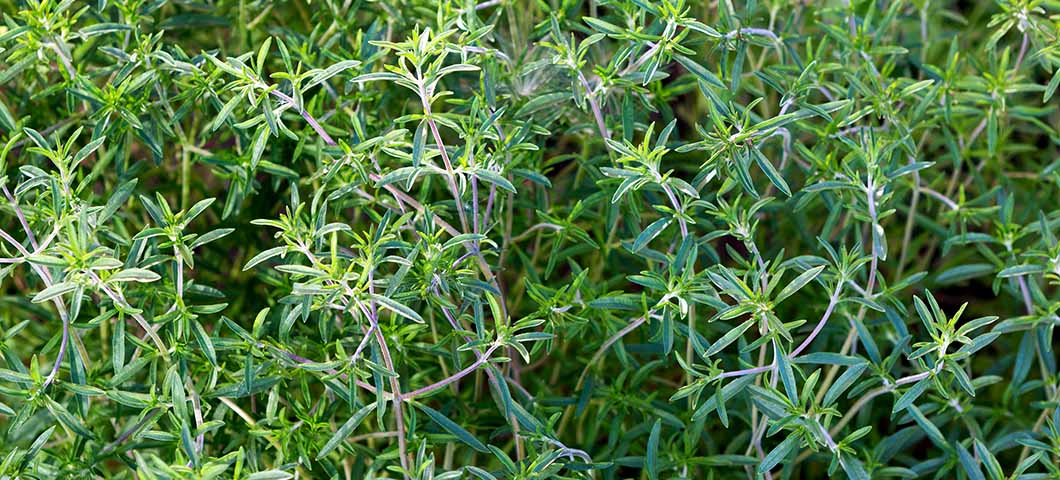Background
The annual herb summer savory (Satureja hortensis L.) is a popular flavoring ingredient for foods. The leaves can be used as a spice, or the entire plant may be distilled for an essential oil. The fresh and dried herb and the essential oil are used to season tomato sauces, sausages, and meat dishes. A related perennial species, winter savory (Satureja montana L.), is less frequently used. Medicinal uses of summer savory are also known.
Summer savory can be grown by direct seeding in the field or from transplants. The plant grows slowly so is not competitive with weeds. Savory grows well in a moderately rich, well-drained soil, but is tolerant of poor soils and relatively dry conditions. The plant is harvested at the beginning of bloom.
Research Summary
Summer savory 'Aromata' (Johnny’s Selected Seeds) was sown in the greenhouse on May 8, 1998, and planted in the field June 17 at the Western Agricultural Research Center, Corvallis, MT. Six-row plots were 8 ft long with rows 18" apart and 8.7" between plants, with four replications. The plants were poorly anchored and were easily uprooted by cultivation equipment or wind. By the end of the 1998 season only about 60% of the plants remained.
In 1999, summer savory was direct sown in the field on June 11 at 1.25 lb/a. Plant stand was 6.3 plants/ft. Plant stand and anchorage were good and growth was vigorous. Direct seeding was more efficient than transplanting and plant performance was superior to that seen in 1998.
Two harvests were obtained at WARC in 1998 and one in 1999. The top 2/3 of the plant was cut on August 5, 1998, as plants were beginning to flower, and a second harvest of the top 2/3 of the plant was done on September 21 when the plants were in full bloom. In 1999, the entire top of the plant was harvested during bloom on September 3. The plants were air-dried and oil was distilled from the entire plant top. Subsamples of harvested plant material were separated into leaf and stem portions to determine production as an whole herb.
Discussion
Yields at WARC compare favorably with the reported yield of about 6 US tons of “clover-dried” plants per acre which gave 26 lb oil (1). Oil yield was higher in 1999 than in 1998 despite the earlier start afforded by transplants.
Summer savory grew well at the WARC, producing a good yield of herb and oil. Plants grown from transplants bloomed earlier and could be harvested twice, but a higher oil and dry matter yield was obtained from direct-seeded plants harvested only once. Plants resulting from direct-seeding were more vigorous and strongly rooted than those grown from transplants.
|
Harvest Date
|
Dry weight (lb/a)
|
Leaf (lb/a)
|
Oil (lb/a)
|
|---|---|---|---|
|
1998
|
|
|
|
|
Aug. 5
|
1,114
|
--
|
16.2
|
|
Sept. 21
|
1,893
|
--
|
20.7
|
|
Total 1998
|
3,007
|
--
|
36.9
|
|
1999
|
|
|
|
|
Sept. 3
|
2,737
|
1,646
|
44.3
|
Acknowledgements
Seed was donated by Johnny's Selected Seeds, Albion, ME.
References
- Guenther, E. 1948. The Essential Oils. Robert E. Krieger Pub. Co., Inc.
- Simon, J., A. Chadwick and L. Craker. 1984. Herbs: An Indexed Bibliography. 1971-1980. The Scientific Literature on Selected Herbs, and Aromatic and Medicinal Plants of the Temperate Zone. Archon Books, 770 pp., Hamden, CT.


